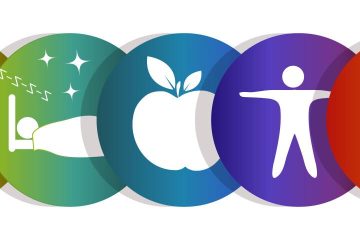Table of Contents
- Exploring Mindfulness Practices for Enhanced Well-Being
- Revitalizing Your Body with Effective Fitness Routines
- Nourishing Your Mind with Healthy Eating Habits
- Cultivating Social Connections for Mental Health
- Integrating Restorative Practices into Your Daily Life
- Q&A
- Closing Remarks
Exploring Mindfulness Practices for Enhanced Well-Being
Incorporating mindfulness into daily routines can significantly bolster overall well-being. A variety of practices can help cultivate a greater sense of presence and peace. Some effective techniques include:
- Mindful Breathing: Focus on your breath, inhaling deeply and exhaling slowly. This practice can help ground you and promote a sense of calm.
- Body Scan Meditation: Gently pay attention to each part of your body, releasing tension and fostering relaxation from head to toe.
- Walking Meditation: Engage in slow, deliberate walking, concentrating on the sensation of each step to connect mind and body.
Regularly practicing these mindfulness techniques can enhance emotional well-being and reduce stress levels. Furthermore, it can lead to improved focus and mental clarity, which are essential in today’s fast-paced world. Adopting mindfulness can create a ripple effect, influencing every aspect of your life. Consider integrating these practices into your routine:
- Set a Daily Intention: Start your day by dedicating a few moments to set a positive intention.
- Scheduled Mindfulness Breaks: Create regular pauses throughout your day dedicated to mindfulness practices.
- Mindfulness Journaling: At the end of the day, reflect on your experiences and insights.
To further enhance your mindfulness journey, consider joining local workshops or online courses focused on well-being and meditation. Here’s a quick overview of potential courses:
| Course Name | Duration | Format | Cost |
|---|---|---|---|
| Mindfulness Basics | 4 Weeks | Online | $49 |
| Advanced Meditation Techniques | 6 Weeks | In-Person | $99 |
| Mindfulness for Stress Relief | 3 Weeks | Online | $30 |
Engaging with these resources can deepen your mindfulness practice, offering new strategies and community support for enhancing your well-being.


Revitalizing Your Body with Effective Fitness Routines
Embracing a fitness routine can be a transformative experience for your body and mind. By integrating various exercises into your daily life, you can enhance muscle tone, improve cardiovascular health, and boost your overall energy levels. When constructing an effective workout plan, consider including a blend of different activities that cater to various fitness levels and interests. This variety not only prevents boredom but also ensures a comprehensive approach to health. Focus on integrating the following core components:
- Aerobic Exercises: Activities like running, cycling, or swimming increase heart rate and improve endurance.
- Strength Training: Using weights or resistance bands helps build muscle and bone density.
- Flexibility Training: Incorporating yoga or stretching routines enhances flexibility and reduces injury risk.
- Balance Exercises: Practices such as tai chi can foster stability and coordination.
To maximize the benefits of your fitness journey, it’s crucial to schedule regular workouts while also allowing for recovery time. A well-rounded weekly fitness plan could look like this:
| Day | Activity | Duration |
|---|---|---|
| Monday | Aerobic Training | 30 minutes |
| Tuesday | Strength Training | 45 minutes |
| Wednesday | Rest Day / Light Stretching | N/A |
| Thursday | Flexibility Exercises | 30 minutes |
| Friday | Aerobic & Balance Work | 40 minutes |
| Saturday | Strength Training | 45 minutes |
| Sunday | Rest Day / Mindfulness | N/A |
Maintaining consistency with fitness routines can significantly impact your well-being. Incorporate activities that not only challenge your body but also bring you joy, making it easier to stick to your regimen. Remember to listen to your body and adjust the intensity according to your needs. Celebrate your progress, no matter how small, and watch as your vitality and energy soar.


Nourishing Your Mind with Healthy Eating Habits
Maintaining a balanced diet is essential for enhancing both physical and mental well-being. Prioritizing nutritious foods can significantly impact your cognitive functions. Foods rich in omega-3 fatty acids, antioxidants, and vitamins play a crucial role in supporting brain health. Consider incorporating the following items into your meals:
- Fatty fish (like salmon and mackerel) for omega-3s
- Blueberries for their antioxidant properties
- Nuts (especially walnuts) for essential fatty acids
- Leafy greens (such as spinach and kale) for vitamins K and E
Additionally, maintaining hydration is vital for cognitive performance. Dehydration can lead to fatigue and decreased concentration, so make sure to consume a variety of fluids throughout the day. Opt for water, herbal teas, and other hydrating beverages. You might also want to include a table in your daily planner to track your water intake:
| Time of Day | Water Intake (ml) |
|---|---|
| Morning | 500 |
| Afternoon | 750 |
| Evening | 500 |
| Throughout the Day | 250 |
don’t forget about the importance of mindful eating. Taking the time to savor your meals helps you appreciate the flavors and textures, and it promotes better digestion. Try to focus on your food rather than distractions like screens or multitasking. Create an inviting dining environment for yourself. This simple shift can elevate your overall eating experience, encouraging healthier choices and a deeper connection to the nutrition you provide your body.


Cultivating Social Connections for Mental Health
Building and nurturing social connections is essential for fostering emotional resilience and enhancing overall well-being. Engaging with others not only alleviates feelings of loneliness but also enriches our lives through shared experiences. To strengthen these connections, consider exploring various activities that promote interaction and community support. These can range from simple gatherings to organized group activities, providing both the opportunity to bond and the potential for personal growth.
Here are some effective activities to cultivate social relationships:
- Join a local club or hobby group: Whether it’s a book club, a sports team, or an art class, participating in shared interests can spark meaningful conversations and lasting friendships.
- Volunteer for community service: Giving back not only supports those in need but also connects you with other compassionate individuals who share similar values.
- Host regular gatherings: Create a warm, inviting space for friends and family to gather. Game nights, potlucks, or seasonal parties can provide a backdrop for regular social interaction.
- Participate in group fitness classes: Exercise is not only beneficial for physical health but also helps you meet others who prioritize wellness.
Consider the following table highlighting the benefits of various social activities:
| Activity | Key Benefits |
|---|---|
| Book Club | Enhances communication skills, encourages critical thinking and enhances empathy through diverse narratives. |
| Sports Team | Fosters teamwork, builds camaraderie, and improves physical fitness. |
| Art Class | Encourages creativity, self-expression, and relaxation while connecting with others. |
Engaging in these social activities not only benefits your mental health but also strengthens your ability to support others. Through these connections, individuals can share their experiences, offer emotional backing, and foster a sense of belonging that is vital for holistic health.


Integrating Restorative Practices into Your Daily Life
Incorporating restorative practices into your daily routine can significantly enhance your health and wellness journey. To begin, consider integrating mindful moments into your day. This could involve setting aside a few minutes for meditation or deep breathing exercises, which can help center your mind and reduce stress. Engaging in activities like yoga or tai chi not only promotes physical health but also nurtures emotional well-being through a connection between body and mind. By carving out time for these practices, you create a sanctuary within your busy life that fosters healing and reflection.
Another powerful way to weave restorative practices into your day is through community engagement. Participating in local support groups or volunteering can foster connections and bring a sense of belonging to your life. Building relationships with others who share similar values and goals can provide encouragement as you work towards personal wellness. Consider these options:
- Join a local meditation group: Share your experiences and learn from others.
- Participate in a wellness workshop: Explore new techniques and holistic approaches.
- Connect with friends for nature walks: Embrace the outdoors while nurturing social ties.
Lastly, reflect on your daily habits and assess how they support or hinder your wellness objectives. Start a restorative journal where you document feelings, experiences, and insights. This can help you identify patterns and areas for improvement in your daily life. Here’s a simple table to track your wellness activities:
| Activity | Frequency | Reflection |
|---|---|---|
| Meditation | Daily | Feeling calmer and more focused. |
| Yoga | 3 times a week | Increased flexibility and reduced anxiety. |
| Nature walks | Weekly | Boost in mood and energy levels. |
By consistently applying these restorative practices to your daily life, you pave the way for lasting health and wellness transformations. Consider these steps as small yet significant contributions to your overall well-being.




0 Comments